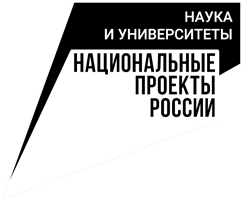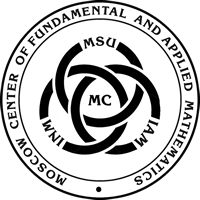PROGRAM
11:00 (GMT+3)
| Junbin Li Sun Yat-Sen University |
|
|
Bio: Junbin Li is currently a professor at Sun Yat-Sen University. He obtained his doctoral degree also at Sun Yat-Sen University in 2014. The research interest of Junbin Li is geometric analysis, in particular the mathematical theories of general relativity. |
|
Some mathematical problems of gravitational collapse in general relativity.
I will give a brief review on the mathematical theories of gravitational collapse in general relativity, and talk about some problems and recent developments, including my works on the formation of trapped surfaces, black holes and instability of naked singularities.
12:00 (GMT+3)
| Alexei Kanel-Belov Bar-Ilan University, Moscow State University, Moscow Institute of Physics and Technology |
|
|
Bio: Alexei Kanel-Belov is a Professor at Bar-Ilan University, Moscow State University and Moscow Institute of Physics and Technology. He studies various problems related to the finite basis property of systems of identities, automorphisms of algebraic varieties (together with M.Kontsevich) , combinatorics of words and symbolic dynamical systems, particularly IET. |
|
Self-interlocking structures in R2 and R3.
Consider a set of contacting convex figures in $R^2$. It can be proven that one of these figures can be moved out of the set by translation without disturbing others. Therefore, any set of planar figures can be disassembled by moving all figures one by one. However, attempts to generalize it to $R^3$ have been unsuccessful and quite unexpectedly interlocking structures of convex bodies were found. Author proposed the following mechanical use of this effect. In a small grain there is no room for cracks, and crack propagation should be arrested on the boundary of the grain. On the other hand, grains keep each other. So it is possible to get "materials without crack propagation" and get new use of sparse materials, say ceramics. Quite unexpectedly, such structures can be assembled with any type of platonic polyhedra, and they have a geometric beauty. Some patents were obtained
https://www.elibrary.ru/item.asp?id=47260049
https://www.elibrary.ru/item.asp?id=47259870
https://www.elibrary.ru/item.asp?id=46607120
The talk is devoted to the different structures. The talk is devoted to the theory of self-interlocking structures and to the recent progress in it by Manturov: a) There exist two-dimensional self-interlocking structures in 3-dimensional space; b) One can construct self-interlocking 2-dimensional structures which are rigid once two polygons are fixed.
Vassily O. Manturov, Alexei Kanel-Belov, Seongjeong Kim, Two-dimensional self-interlocking structures in three-space, 2021 (Published online) , 21 pp., arXiv: 2109.06426.
Kanel-Belov, A.J., A.V. Dyskin, Y. Estrin, E. Pasternak and I.A.Ivanov. 2010. Interlocking of convex polyhedra: towards a geometric theoryof fragmented solids. Moscow Mathematical Journal, arXiv:0812.5089v1.
Dyskin, A.V., Y.Estrin, A.J.Kanel–Belov and E.Pasternak,“Interlocking properties of buckyballs.”, Physics Letters A, 319 (2003),373–378
jumas, L., Simon, G.P., Estrin, Y. et al. Deformation mechanicsof non-planar topologically interlocked assemblies with structuralhierarchy and varying geometry. Naure, SciRep 7, 11844 (2017).https://doi.org/10.1038/s41598-017-12147-3
In recent works, some interlocking structures were constructed. These structures were based on periodic tailings in a plane and were nearplanar. In addition, they were unstable in the following sense. After removing a finite set of elements, they can de disassembled one by one. Here we present spatial structures that are interlocking in several planes simultaneously. There is also another spatial effect. If a plane is divided into convex figures, there always one such that it has common edges with no more then 6 its neighbours. However, in 3D space it is not so. For any $n$ there is a division of space into congruent convex bodies such that any one of them has a common face with more than n its neighbours. This construction allows us to have interlocking in any number of layers. Many structures were generated during Sirius Math. camp. We discuss a way to generate interlocking structures and their possible properties. Finally, we present a review of different interlocking structures and formulate some open problems.
The meeting will be held in the form of a webinar on the Zoom platform.
Pre-registration for the event is not required.
Link to the conference:
https://us06web.zoom.us/j/82976529944?pwd=RkpoMm9pdVRFUkgvZktTbFgxUXQrdz09
Meeting ID : 829 7652 9944
Passcode:987654

